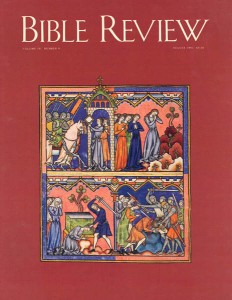As we noted in our first lesson (“Starting with Aleph,” BR 07:03), the Hebrew alphabet originally had no symbols for vowels. It was a form of shorthand, with signs only for consonants. In order to eliminate ambiguity in pronunciation, a secondary system of vowel notation was developed. The final form of the vowel notation system was perfected in the tenth century C.E. by scribes living in Tiberias on the Sea of Galilee. They are known as the Masoretes, from the Hebrew word for “to hand over” (for more on the Masoretes, see Harvey Minkoff on the Aleppo Codex).
In this lesson we will learn the Masoretic system of vowel notation, which is still used today. But before we do, we need to note one other thing about Hebrew writing as the Masoretes understood it: The consonants were sacred and could not be altered. So the system of vowel signs had to fit into, but not alter, the sacred letters. Hence, the vowel signs appear as small marks below, within and above the consonants.
Hebrew has ten vowel signs, divided into short and long vowels. They are shown in the chart below.
Name | Description of vowel | Vowel Sign | Example | Pronunciation in English | Meaning | |
Short Vowels | patach | short dash below consonant | bot (as in bot tom) | daughter |
Already a library member? Log in here.
Institution user? Log in with your IP address.

